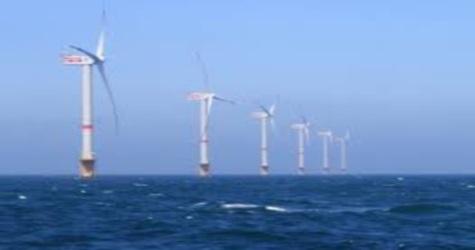RWE Innogy, DONG Energy, EnBW, E.ON and Vattenfall conduct a one year onshore-test to validate the vibratory driving of large monopiles for the use offshore with support from the Carbon Trust Offshore Wind Accelerator (OWA) and the offshore supply industry
Conducting research and development projects can provide potential for reducing costs and installation time when developing offshore wind farms. Another promising project has started this week under the management of the Carbon Trust’s Offshore Wind Accelerator (OWA), a world leading collaborative research and development programme to cut the cost of offshore wind energy: The offshore wind developers and operators RWE Innogy, DONG Energy, EnBW, E.ON and Vattenfall are running a one year onshore demonstration project near Cuxhaven on the German North Sea coast to validate the vibratory driving of wind turbine monopile foundations, in comparison and as evolution to current impact driving of these piles. The potential benefit is faster and more environmentally benign monopile installation in offshore wind farm projects.
In collaboration with the certification and regulatory bodies, three monopiles will be installed via vibration and benchmarked to another set of three which is driven with conventional impact hammering in order to compare their performance through a variety of tests. Therefore, Bilfinger Construction is the project’s installation partner who coordinates and executes the installation and testing of the piles. The project is scheduled to start construction in May and is planned to run until November 2014.
The pilot project’s objective is to demonstrate that the lateral load capacity of vibrated and hammered piles in sand is to be regarded as equivalent. Furthermore, it aims to indicate that full depth vibro-driving of monopiles in comparison to hammered piles has lower noise levels, causes lower fatigue symptoms and stress to the monopiles, is faster and more cost effective. Last but not least, this technique shall simplify the installation for large monopiles due to fewer tools involved in the construction process of offshore wind turbines.
“The use of vibration piling has been predicted, and partly demonstrated in selected offshore applications, to decrease the piling time by more than half of that required for impact hammer driving. Innovations such as these can reduce costs significantly for the whole offshore wind industry,” explained Jan Matthiesen of the Carbon Trust, adding: “We are very pleased to run this pilot project in cooperation with industry and operators, alongside certification and regulatory bodies. We hope to achieve valuable insights in order to make vibration driving commercially feasible.”
RWE Innogy leads the project, undertaking and managing the test. The project budget of six million Euro will enable the fabrication, installation and testing of the 21 meters long monopiles with a 4.3 meters diameter, which are currently being produced at the newly established pile fabrication plant of Steelwind Nordenham in Northern Germany.
The outcome of the test will have immediate impact on current projects that are in development in Europe: For example, it will provide timely results to improve the ongoing wind farm design process for the planned Nordsee One offshore wind farm developed by RWE, which is located about 40 kilometres north of the North Sea island Juist.
Source: RWE Innogy








